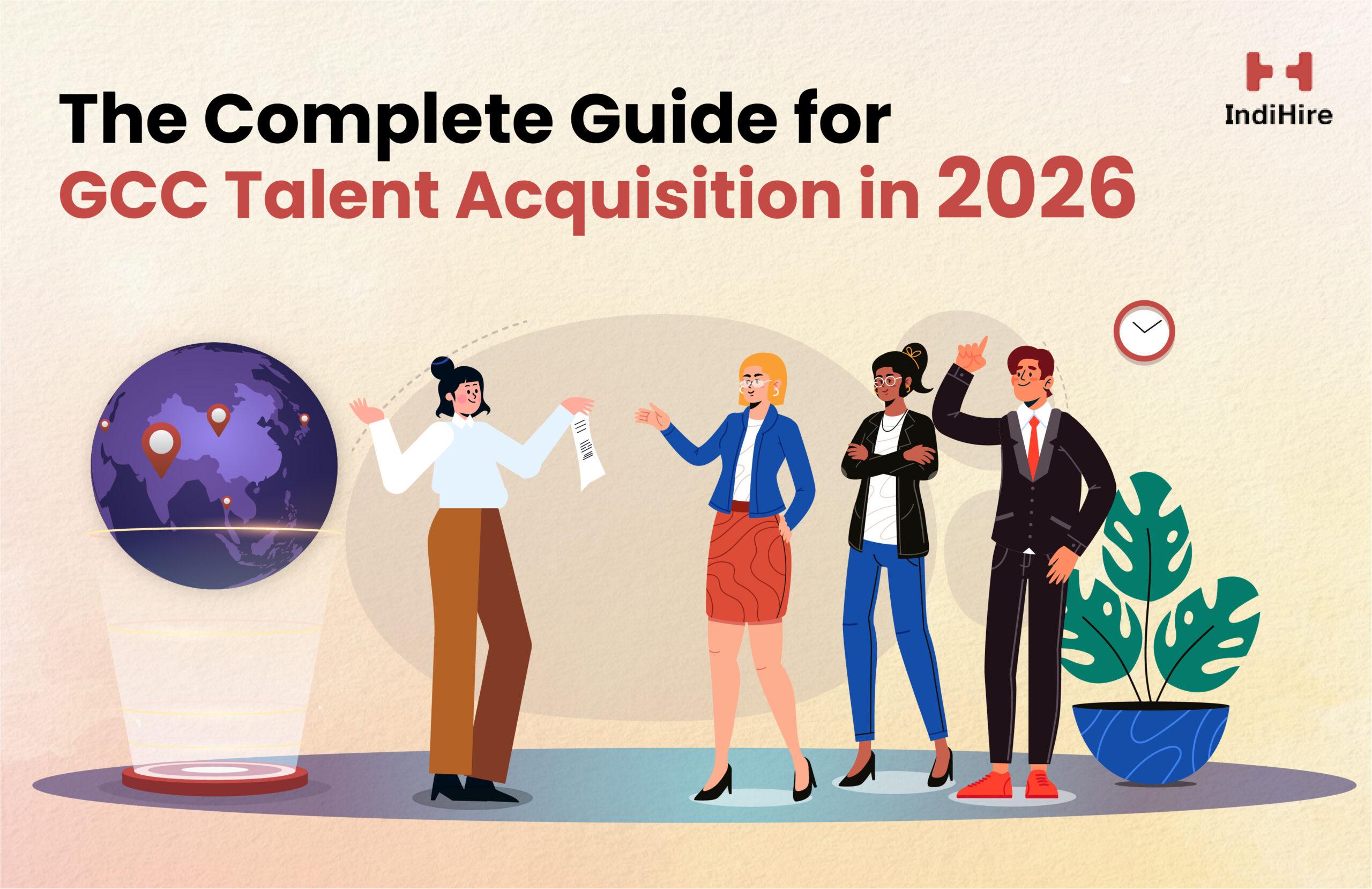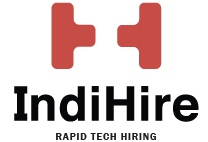The Complete Guide for GCC Talent Acquisition in 2026

Reading Time: 6 min
If 2024 & 2025 were the big reveal, 2026 is the stress test for GCCs in India. They are not just back offices anymore – they are building products, owning P&Ls, and setting the bar for tech, design, AI, risk, and even sustainability.
Talent knows it. So do your competitors. Which means your hiring playbook cannot be a polite list of perks and pizza nights. You need sharper positioning, faster cycles, cleaner data, and roles that feel like a career, not a contract.
A quick reality check: multiple industry bodies, including NASSCOM, place India at 1,700+ GCCs employing well over 1.9 million people, with headcount still trending up into 2026.
Navigating the 2026 GCC Market
You do not hire in a vacuum; you hire in a storm. Talent is found across hubs. Bengaluru, Hyderabad, Pune, Chennai – and increasingly Tier-2 cities.
The emerging skills are commanding huge demand. Think about AI/ML, platform engineering, cybersecurity, data products, cloud FinOps, design systems, risk and compliance, and ESG. Candidates care about meaningful problems, modern stacks, and a sane manager.
What does that mean for you? Anchor in capability, not headcount. Decide where you will be best-in-class and say it out loud.
Build a Sharper Employee Value Proposition
Quick test: If we removed your company name from your career page, would anyone notice? If the answer is “maybe,” your employer brand needs a lift.
- Promise a specific craft journey – junior to expert to mentor, tied to real projects and real outcomes.
- Show product ownership. “You ship. You measure. You iterate”. It is simple, but it lands.
- Spotlight managers – candidates join leaders, not logos.
- Make your deal breakers visible – code quality, design standards, security posture, on-call norms.
Use one bold message candidates can repeat to a friend. For example – “Building global payment resilience with zero drag”. Simple. Sticky.
Go Skills-First, Not Title-First
Job titles are confusing. Skills are not. In 2026, your skills graph is your hiring edge.
You need to define skills for every critical role, and not just the skills mandatory for the job but also the adjacent skills required to excel, and the future skills needed to evolve with the market.
Instead of using trivial questions related to the role, implement structured, scenario-led assessments. Let people show what they can do in short 60–90 minute assessments that show how they are going to solve real problems, not just hypotheticals. Weight learning ability and range. Curious people scale better than narrow experts.
A simple rule we have seen work: hire for 70% skill match, 30% learning velocity.
Design Roles Candidates Actually Want
Strong candidates ask three questions: What will I own? Who will I learn from? What will I ship?
Write role charters, not vague JDs. Include stack, teammates, interfaces, and 90-day outcomes. Show the “portfolio” of problems. Think product roadmaps, platform migrations, or risk models – not “miscellaneous tasks”.
A small touch that pays off is publishing a sample week. It helps candidates understand the actual work and screens out mismatches early.
Build repeatable pipelines
In 2026, you need multiple supply lines, each with a clear conversion playbook.
- Campus and Early Career: Own 2-3 schools deeply with co-built labs, real-world projects, and guaranteed rotations. Do not just show up at placement week and pray.
- Returnships and Second-Career Talent: 12-16 week paid, project-led pathways to help professionals rebuild confidence and learn new skills.
- Referrals at Scale: Prompt-referral campaigns tied to hard-to-fill skills with time-bound bonuses.
If a channel cannot consistently produce 15–20% of hires with acceptable quality, fix it or scrap it.
Rethink location and compensation
The old binaries are not going to work anymore. You need to be more surgical.
- Hub-and-Spoke: Build your core, anchor teams in major hubs but also establish satellite pods in Tier-2 cities for specific skills. Create purposeful travel rituals for bonding and architecture reviews.
- Comp Bands: Move to skills-based ranges with transparent accelerators for scarce skills and high-impact roles.
- Pay Progression: Tie it to skill milestones and shipped impact, not tenure alone.
Hybrid is fine but make sure that the office time is useful.
Make candidate experience your differentiator
Speed sells. Clarity converts.
- Commit to a 10-12 business day decision for priority roles.
- Share an interview guide before the panel. No surprises, just standards.
- Give specific feedback to every finalist. People remember it.
- Pre-boarding is necessary. Access, buddies, dev environment, and a 30/60/90-day plan before Day 1.
Offer declines often hide one truth: ambiguity. Eliminate it with details.
Set 2026 hiring metrics that matter
Remove metrics that do not provide specific insights and keep the ones that move the business.
- Time-to-Hire: Target a 20-30% improvement in priority roles.
- Quality-of-Hire: Track 6-month performance of all hires and analyse if your hiring decisions are accurate or not.
- Offer-Accept: Maintain above 80% for priority skill groups.
- First-Year Attrition: You should keep this below 10–12% for experienced hires.
Make one dashboard. Review it weekly. Adjust fast.
The Long-Term Vision
Lately, we have been witnessing unannounced LAYOFFs happening all over the GCC ecosystem. They decided to restructure and laid 50 professionals off. It has forced top professionals to rethink their decision to join a GCC.
When an organization sets up its GCC, it starts hiring quickly without thinking about the long-term goal. For the initial few years, this might help them set up fast and start delivering, but after that, they have more people than they can actually afford or need.
To avoid this situation, GCCs need to rethink their whole long-term talent strategy and hire for roles that they can retain for the marathon, not only for the short sprint.
A Practical 90-day plan
If you need momentum now, start here:
- Define your top 10 roles and their must-have skills. Write role charters. Publish.
- Standardise interview loops with structured criteria. Train panels.
- Clean candidate pipelines in your ATS. Kill zombie requisitions.
- Turn on referrals and two niche hiring events. Ensure that offers roll-out within 48 hours after final round.
- Launch a 12-week returnship for one critical craft. Track conversion.
- Build a simple talent intelligence brief on two new cities and two competitors.
You will feel results within one quarter. You will see brand lift within two.
Closing the loop
2026 will reward GCCs that hire like product teams: clear scope, honest trade-offs, fast feedback, and constant iteration. If you make the work meaningful, the pathway visible, and the process respectful, top talent will not just join – you will make them stay.
If you are thinking, “Where do I start?” start small, start real, and start now. Your future team is already attending interviews.



